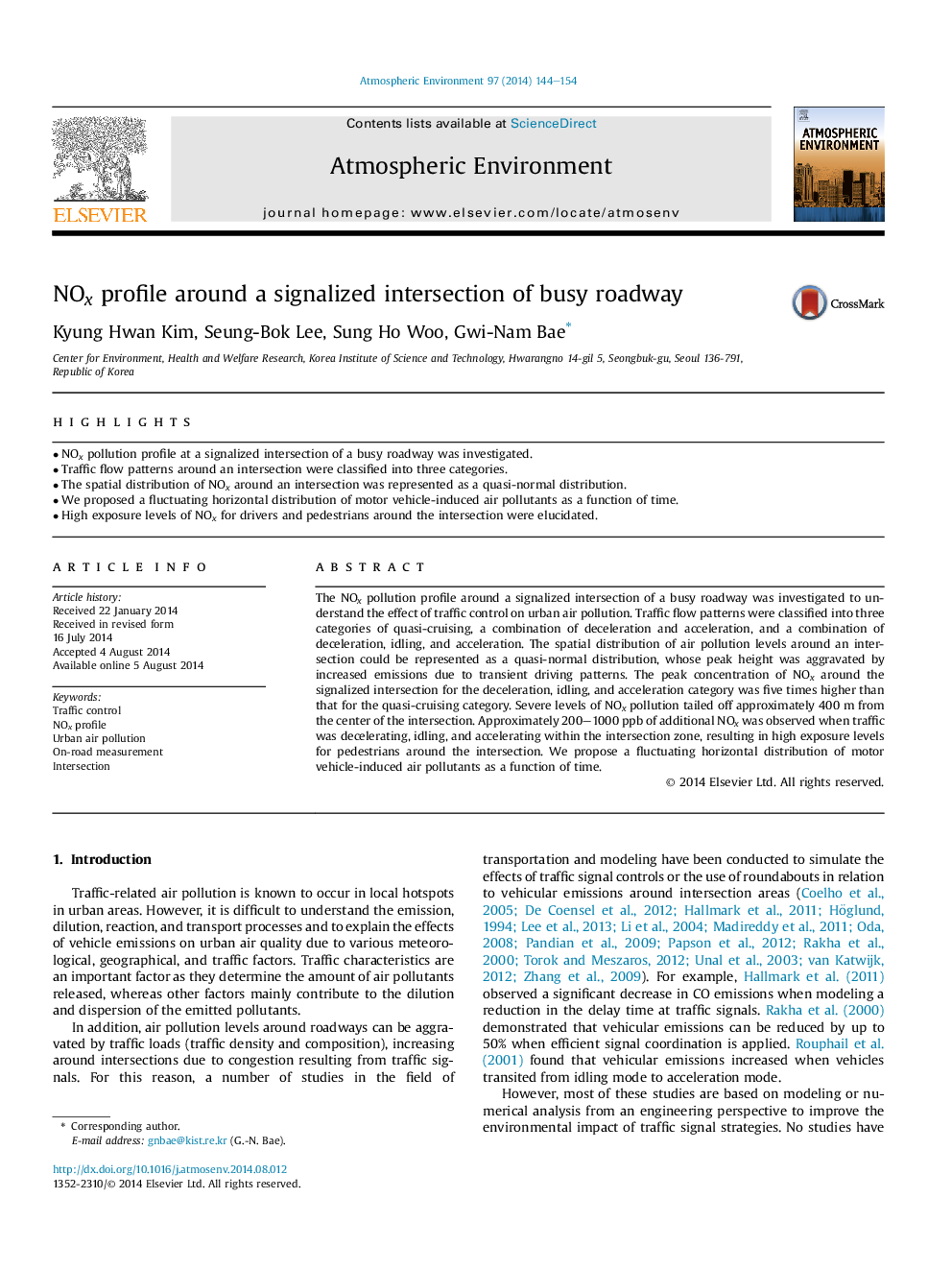| Article ID | Journal | Published Year | Pages | File Type |
|---|---|---|---|---|
| 6339767 | Atmospheric Environment | 2014 | 11 Pages |
â¢NOx pollution profile at a signalized intersection of a busy roadway was investigated.â¢Traffic flow patterns around an intersection were classified into three categories.â¢The spatial distribution of NOx around an intersection was represented as a quasi-normal distribution.â¢We proposed a fluctuating horizontal distribution of motor vehicle-induced air pollutants as a function of time.â¢High exposure levels of NOx for drivers and pedestrians around the intersection were elucidated.
The NOx pollution profile around a signalized intersection of a busy roadway was investigated to understand the effect of traffic control on urban air pollution. Traffic flow patterns were classified into three categories of quasi-cruising, a combination of deceleration and acceleration, and a combination of deceleration, idling, and acceleration. The spatial distribution of air pollution levels around an intersection could be represented as a quasi-normal distribution, whose peak height was aggravated by increased emissions due to transient driving patterns. The peak concentration of NOx around the signalized intersection for the deceleration, idling, and acceleration category was five times higher than that for the quasi-cruising category. Severe levels of NOx pollution tailed off approximately 400Â m from the center of the intersection. Approximately 200-1000Â ppb of additional NOx was observed when traffic was decelerating, idling, and accelerating within the intersection zone, resulting in high exposure levels for pedestrians around the intersection. We propose a fluctuating horizontal distribution of motor vehicle-induced air pollutants as a function of time.
